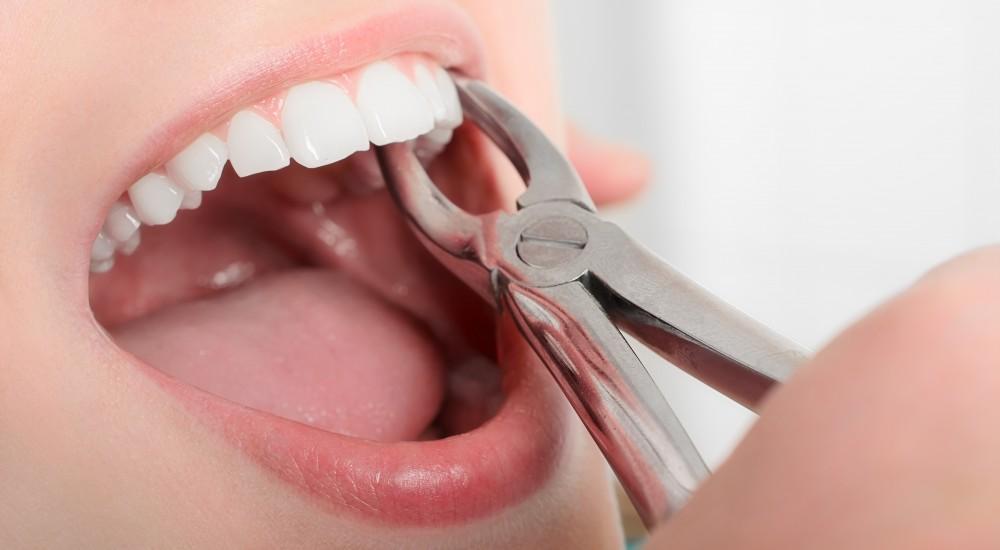
by Dclinicdubai | Sep 26, 2025 | Health
Tooth extraction is often necessary due to decay, trauma, or infection—but it doesn’t have to mean a permanent gap in your smile. Many patients look toward dental implants as a reliable, long-term solution following extraction. Whether you’ve already undergone tooth removal in Dubai or are planning ahead, understanding how to transition from extraction to implantation is key to restoring both function and aesthetics. This guide will walk you through every step of planning dental implants after a tooth has been removed.
Why Replacing a Missing Tooth Matters:
Leaving a gap in your mouth after an extraction can lead to various oral health problems and even affect your overall well-being. Replacing a missing tooth with an implant isn’t just cosmetic—it’s a necessity in many cases. The risks of delaying or avoiding replacement include:
-
Shifting of adjacent teeth into the empty space
-
Jawbone deterioration due to lack of stimulation
-
Bite misalignment leading to TMJ discomfort
-
Difficulty chewing certain foods effectively
-
Increased chances of gum disease or infection
The sooner you plan your implant after removal, the better the outcome for your long-term dental health.
Understanding the Healing Timeline:
Healing from a tooth extraction is essential before you can move forward with dental implants. Depending on your individual case, this process can take several weeks to a few months. Important phases of healing include:
-
Initial blood clot formation within 24 hours
-
Soft tissue healing over 1–2 weeks
-
Bone regeneration over 3–6 months
-
Possible socket preservation procedures to minimize bone loss
-
Follow-up appointments to assess healing progress
Your dentist will monitor the healing closely and determine when the site is ready for implantation.
When to Place a Dental Implant After Extraction:
Timing is a crucial factor when transitioning from extraction to implantation. The decision on when to place the implant depends on the health of the extraction site and the presence of infection or bone loss. Options for implant placement include:
-
Immediate placement – same-day implant if bone quality is ideal
-
Early placement – within 6–10 weeks post-extraction
-
Delayed placement – after 3–6 months of complete bone healing
-
Staged placement – if bone grafting or sinus lift is required first
Each approach has its pros and cons, which your dentist will evaluate based on X-rays or 3D scans.
Bone Grafting and Site Preservation:
In cases where significant bone loss has occurred or is expected, a bone graft may be needed before or during implant placement. This step strengthens the jaw and ensures long-term implant stability. Your dentist may recommend:
-
Socket preservation graft immediately after tooth removal
-
Ridge augmentation if the bone has already deteriorated
-
Sinus lift for upper jaw implants near the sinus cavity
-
Guided bone regeneration (GBR) using barrier membranes
-
Use of synthetic, animal-derived, or human bone materials
Proper grafting ensures a solid foundation for successful implant integration.
Choosing the Right Type of Implant:
Dental implants are not one-size-fits-all; they vary in size, shape, and placement technique. Your dentist will recommend an implant system tailored to your oral anatomy and goals. Common types include:
-
Endosteal implants, placed directly into the jawbone
-
Zygomatic implants for patients with severe bone loss
-
Mini implants for smaller gaps or less invasive procedures
-
All-on-4 implants for full arch restoration
-
Custom abutments and crowns to match surrounding teeth
A personalized implant plan ensures optimal fit, comfort, and function.
Benefits of Dental Implants After Tooth Removal:
Dental implants are considered the gold standard for tooth replacement due to their strength, longevity, and natural appearance. Choosing implants offers a wide range of advantages, including:
-
Restoration of chewing power and food variety
-
Prevention of facial sagging and bone atrophy
-
Permanent, non-removable solution compared to dentures
-
No impact on neighboring teeth (unlike bridges)
-
Enhanced self-confidence and speech clarity
When planned properly after extraction, implants can last a lifetime with good care.
Caring for Your Implant Post-Surgery:
Once your dental implant is placed, proper aftercare is vital to ensure successful osseointegration (fusion of the implant with the jawbone). Your dentist will provide detailed post-op instructions, typically involving:
-
Gentle brushing and use of soft-bristled toothbrushes
-
Avoiding hard or sticky foods during the healing period
-
Using antimicrobial mouth rinses as prescribed
-
Attending regular follow-up appointments to monitor progress
-
Flossing and cleaning around the implant with special tools
With diligent care, implants can remain healthy and functional for decades.
Cost Considerations and Insurance:
Dental implants can be a significant investment, but they offer unparalleled long-term value compared to other tooth replacement methods. When planning your budget, be aware of potential costs and variables such as:
-
Tooth extraction and anesthesia fees
-
Bone grafting or additional procedures
-
Implant hardware (post, abutment, and crown)
-
Consultation and diagnostic imaging costs
-
Dental insurance coverage or financing options
If you’re undergoing tooth removal in Dubai, many dental clinics offer bundled implant packages or interest-free payment plans.
Choosing the Right Dental Clinic in Dubai:
Successful implant placement starts with choosing a reputable clinic that prioritizes patient care and technology. If you’re navigating tooth removal in Dubai and planning implants, look for providers that offer:
-
Advanced imaging tools like CBCT scans for precision planning
-
In-house oral surgeons or implant specialists
-
Transparent treatment plans with full cost breakdowns
-
A strong portfolio of successful implant cases
-
Long-term follow-up and maintenance support
Selecting the right clinic ensures a seamless experience from extraction to implant.
Final Thoughts:
Tooth extraction is never the end—it’s the beginning of your restoration journey. Dental implants offer a reliable, natural-looking replacement that preserves both form and function, but planning is everything. From proper healing after extraction to selecting the right implant type, each step requires careful coordination and professional guidance. If you’ve undergone tooth removal in Dubai, consult with your dental specialist early to explore your implant options and map out a plan that supports your smile for life.
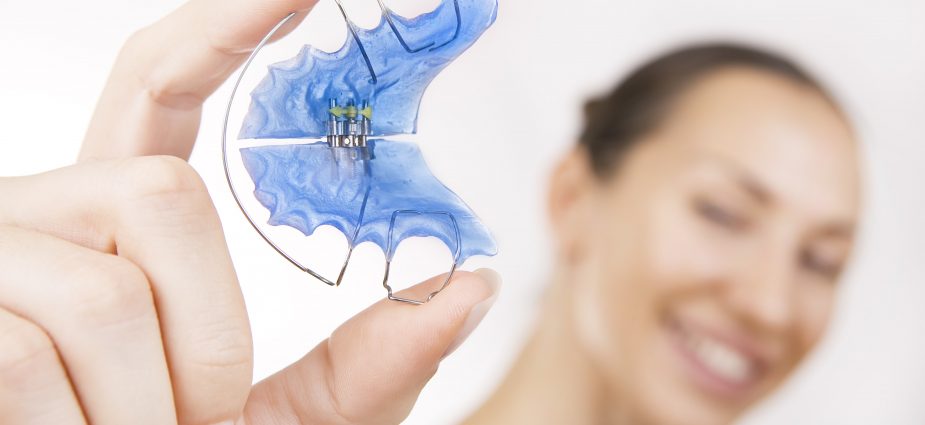
by Dclinicdubai | Sep 26, 2025 | Health
After completing orthodontic treatment, retainers play a vital role in maintaining your smile. But many patients still wonder about one common issue: Can you eat with dental retainers? The answer largely depends on the type of retainer you’re using and how you care for it. For those who have invested in Dental Retainers in Dubai, understanding what’s safe and what’s risky can help protect both your oral health and your retainer. In this guide, we’ll explain everything you need to know about eating with retainers—and the mistakes to avoid.
Types of Retainers and How They Affect Eating:
Dental retainers generally come in two main categories: removable and fixed. Each has its own implications when it comes to eating and drinking.
-
Removable Retainers (e.g., Essix or Hawley): Must be taken out before eating
-
Fixed Retainers (bonded wires): Remain in place during meals
-
Clear plastic retainers are especially vulnerable to damage
-
Acrylic and wire models are more durable but still removable
Knowing your retainer type is essential before you decide whether you can eat with it or not.
Why You Should Avoid Eating with Removable Retainers:
Removable retainers are not designed to handle the pressure and complexity of chewing. Eating while wearing one can lead to a variety of issues, both hygienic and structural.
-
Food particles can become trapped, causing bad odors
-
Chewing pressure may crack or warp the plastic
-
Increases the chance of bacterial buildup
-
May stain or discolor over time
Always remove your removable retainer before meals to avoid damaging it or harming your oral health.
What Happens If You Eat with a Clear Retainer:
Clear retainers, like Essix models, are especially vulnerable to heat and bite force. Many patients assume soft foods are okay, but this still poses a risk.
-
Hot food can distort the plastic material
-
Sticky foods may cling to the surface, leading to decay
-
Chewing can cause microcracks, shortening lifespan
-
Surface scratches can harbor bacteria and affect clarity
To preserve both appearance and function, it’s best to keep clear retainers out while eating.
Eating with Fixed Retainers: Things to Consider:
Fixed retainers are bonded behind your teeth and cannot be removed. While you can technically eat with them, you still need to be cautious about the foods you choose.
-
Avoid biting directly into hard foods like apples or nuts
-
Sticky foods can pull on the wire or dislodge the bonding
-
Extra care is needed when brushing and flossing afterward
-
Regular dental checkups are essential to monitor wear
Even though they stay in place, fixed retainers require responsible eating habits to prevent damage.
Drinks That Can Damage Your Retainer:
Even if you’re not eating, drinking the wrong beverages while wearing your retainer can still cause harm. Many drinks are acidic, sugary, or hot—all of which can affect the appliance.
-
Coffee, tea, and wine can stain retainers
-
Carbonated sodas and energy drinks are acidic and cause erosion
-
Hot drinks can warp plastic retainers
-
Sugary drinks increase plaque and decay risk
Stick to water when your retainer is in your mouth. Remove it if you’re planning to drink anything else.
Best Practices Before and After Eating:
Creating a daily routine around eating and retainer care can go a long way in extending the life of your appliance and keeping your teeth healthy.
-
Always remove your retainer before meals
-
Rinse your mouth before reinserting the retainer
-
Clean the retainer with mild soap and water daily
-
Store it in a ventilated case while eating
-
Brush your teeth before putting it back in
Consistency is key. Developing simple habits will keep your retainer fresh and functional.
Foods to Avoid with a Retainer:
Certain foods pose a risk to both removable and fixed retainers. Whether due to texture, temperature, or stickiness, these foods should be avoided or consumed with caution.
-
Hard foods: Nuts, popcorn kernels, ice cubes
-
Sticky foods: Chewing gum, caramel, gummy candies
-
Crunchy foods: Chips, hard bread, raw vegetables
-
Hot foods: Freshly baked dishes, soup, pizza
Even with fixed retainers, biting directly into tough items can lead to complications that require orthodontic repair.
What to Do If You Accidentally Eat with Your Retainer:
Accidents happen. If you forget to remove your retainer before eating, knowing what to do next can minimize damage and prevent further issues.
-
Inspect the retainer for visible damage or warping
-
Clean it thoroughly to remove any food residue
-
Check if it still fits properly—tightness may indicate shifting or damage
-
Contact your orthodontist if anything seems off
If you’re using Dental Retainers in Dubai, most clinics offer same-day appointments for retainer assessments or repairs.
How to Maintain a Healthy Diet While Wearing Retainers:
Just because you need to be cautious with your retainer doesn’t mean your diet has to suffer. With a bit of planning, you can maintain proper nutrition while protecting your appliance.
-
Cut fruits and vegetables into small, manageable pieces
-
Choose softer protein options like eggs, tofu, or shredded chicken
-
Opt for whole grains in softer forms like oatmeal or pasta
-
Drink water regularly to keep your mouth clean
Being mindful of your meals can help you strike a balance between dental health and nutrition.
Final Thoughts:
Eating with dental retainers—especially removable ones—is not recommended. The pressure from chewing, the risk of staining, and the buildup of bacteria all contribute to the need for caution. Fixed retainers allow for more flexibility, but even then, certain foods should be avoided to prevent dislodging or wear. Whether you’re just starting with your appliance or have been wearing one for years, understanding how food interacts with your retainer is essential for long-term success. If you’re using Dental Retainers in Dubai, take advantage of expert guidance from your orthodontist to build safe habits around eating and retainer care. Your teeth—and your retainer—will thank you.
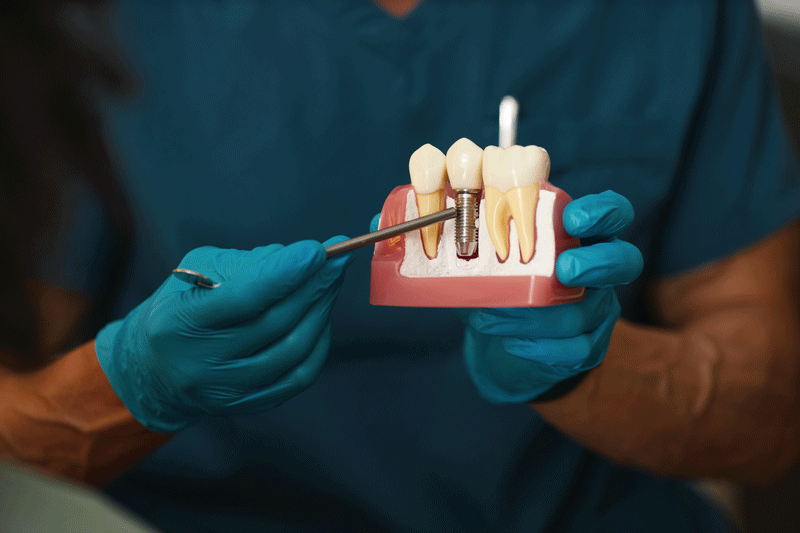
by Dclinicdubai | Sep 25, 2025 | Health
When it comes to achieving a radiant and confident smile, dental implants in Dubai have become a cornerstone of modern cosmetic dentistry. These implants not only restore missing teeth but also improve the overall appearance and function of the mouth. Cosmetic dentistry uses various techniques and treatments to enhance aesthetics, and dental implants fit perfectly into this category by offering a natural-looking, durable solution that complements other smile-enhancing procedures. This article explores how dental implants work alongside cosmetic dentistry to transform smiles and boost self-confidence.
The Role of Dental Implants in Cosmetic Dentistry:
Dental implants serve as artificial tooth roots that support replacement teeth, such as crowns or bridges. Their design and functionality closely mimic natural teeth, making them a popular option for cosmetic improvements. Unlike dentures or traditional bridges, implants integrate with the jawbone, providing stability and preventing bone loss. This integration ensures that the replacement teeth look natural and blend seamlessly with the rest of the smile, a key goal in cosmetic dentistry.
Benefits of Combining Dental Implants with Cosmetic Procedures:
Integrating dental implants with other cosmetic treatments, like teeth whitening, veneers, or gum contouring, can dramatically enhance the overall smile. Implants provide the structural foundation while cosmetic procedures refine the appearance, shape, and color of surrounding teeth. This holistic approach allows dentists to customize smiles based on individual needs, ensuring both beauty and function are addressed simultaneously.
How Dental Implants Improve Facial Aesthetics:
Missing teeth can lead to changes in facial structure, such as sunken cheeks and premature aging. Dental implants restore not only the teeth but also support the jawbone, maintaining the natural contours of the face. By preserving bone density and preventing shrinkage, implants contribute to a youthful and balanced appearance. This facial rejuvenation is an essential aspect of cosmetic dentistry and is highly valued by patients seeking a comprehensive smile makeover.
The Process of Getting Dental Implants in Dubai:
Patients considering dental implants in Dubai typically undergo a detailed evaluation to ensure suitability for the procedure. This includes dental imaging and assessment of bone density. The implant surgery involves placing titanium posts into the jawbone, followed by a healing period during which osseointegration occurs. After healing, a custom crown is attached, designed to match the shape and color of natural teeth. This precise process ensures the best cosmetic and functional outcome.
Maintenance and Longevity of Cosmetic Dental Implants:
Dental implants require regular care to maintain their appearance and functionality. Good oral hygiene practices, routine dental check-ups, and avoiding habits like smoking contribute to implant longevity. Cosmetic enhancements such as professional cleanings and polishing help keep implants and surrounding teeth looking their best. When cared for properly, dental implants can last a lifetime, making them a worthwhile investment in long-term smile aesthetics.
Addressing Common Concerns About Dental Implants and Cosmetics:
Some patients worry about the invasiveness of implant surgery or the naturalness of the final results. However, advancements in dental technology have made the process minimally invasive, and expert cosmetic dentists tailor implants to each individual’s facial features and preferences. Many clinics offering dental implants in Dubai provide patient education and personalized care to address these concerns and ensure a comfortable experience.
The Importance of Choosing Experienced Cosmetic Dentists for Implants:
Success in combining dental implants with cosmetic dentistry depends largely on the dentist’s skill and experience. Clinics specializing in dental implants in Dubai often feature teams with advanced training in both implantology and aesthetic dentistry. Selecting a provider with a strong track record ensures that patients receive comprehensive treatment plans that deliver natural-looking, functional, and beautiful results.
Final Thoughts:
Dental implants have revolutionized cosmetic dentistry by providing a reliable, natural-looking solution for missing teeth that also supports overall facial aesthetics. When combined with other cosmetic treatments, implants help create customized smiles that boost confidence and improve quality of life. If you’re considering smile enhancement, consulting with a qualified specialist offering dental implants in Dubai is the first step toward achieving a beautiful and lasting transformation.
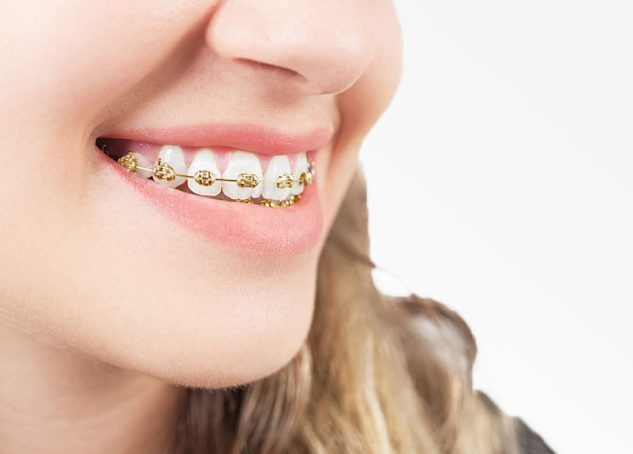
by Dclinicdubai | Sep 25, 2025 | Health
Metal braces have been a trusted orthodontic solution for decades, offering effective and long-lasting results for patients of all ages. Whether you’re dealing with overcrowded teeth, a misaligned bite, or large gaps, metal braces can help you achieve a straighter, healthier smile. For those considering metal braces in Dubai, one of the most common questions is: How long does treatment actually take? The answer depends on several factors, which we’ll explore in detail below.
Average Duration of Metal Braces Treatment:
On average, treatment with metal braces lasts between 18 to 24 months. However, this is not a fixed timeline. Some patients may complete treatment in as little as 12 months, while others with more complex cases may require up to 36 months. Your orthodontist will provide a personalized estimate after your initial consultation and assessment.
Factors That Affect Treatment Time:
The duration of metal braces treatment is influenced by several key factors. These include the severity of the misalignment, the type of malocclusion (bite issue), the patient’s age, and how closely they follow their orthodontist’s instructions. More complex issues like severe crowding or jaw discrepancies usually extend treatment time.
Age and Its Impact on Treatment Duration:
Younger patients—typically children and teens—tend to complete treatment more quickly because their bones and teeth are still developing. This allows braces to move the teeth more efficiently. Adults can also achieve excellent results with metal braces, but the process may take slightly longer due to denser bone structure and fully developed jaws.
The Role of Patient Compliance:
Patient cooperation plays a significant role in determining how long treatment takes. Following dietary guidelines, maintaining good oral hygiene, attending scheduled appointments, and avoiding damage to the braces can all help keep treatment on track. Delays caused by broken brackets or missed visits can extend the overall timeline.
Type and Complexity of Orthodontic Issue:
Mild cases of spacing or slight crowding can often be corrected in a shorter period. In contrast, complex issues such as overbites, underbites, or crossbites typically require more time and precision. Your orthodontist may also need to incorporate additional appliances, such as rubber bands or expanders, which can affect the treatment length.
Importance of Regular Adjustments:
Metal braces work by applying continuous pressure to gradually shift the teeth into the desired position. To maintain progress, adjustments are usually made every 4 to 6 weeks. These visits are critical to monitor your development and ensure that each phase of the treatment is completed as planned.
Impact of Orthodontic Technology:
Advancements in orthodontic technology—such as heat-activated archwires and 3D imaging—have made metal braces more efficient than ever before. Clinics offering metal braces in Dubai often use digital scans and treatment simulations to create more accurate and faster-moving plans, potentially shortening the treatment timeline for many patients.
Managing Delays and Setbacks:
Life happens, and sometimes treatment doesn’t go exactly as planned. Missed appointments, poor oral hygiene, or eating foods that damage the braces can all cause setbacks. Being proactive about care and communicating regularly with your orthodontist can minimize these delays and help you stay on course.
Signs That Treatment Is Progressing Well:
There are a few indicators that your treatment is moving in the right direction. You may notice gaps closing, teeth becoming more aligned, or your bite gradually improving. Your orthodontist will track your progress at each appointment and let you know how close you are to completion.
What Happens After Braces Come Off:
After the active phase of braces is complete, you’ll move into the retention phase. This involves wearing a retainer to keep your teeth in their new positions. While the braces may come off after 18–24 months, wearing your retainer consistently is essential to maintain results and prevent shifting.
Customizing the Timeline for Individual Needs:
Orthodontic treatment isn’t one-size-fits-all. Each patient receives a customized plan based on their unique dental structure and goals. While online research can provide general timelines, only an experienced orthodontist can give you a precise estimate based on digital scans, X-rays, and a clinical examination.
Choosing the Right Orthodontist Matters:
The success and efficiency of your treatment depend heavily on the skill and approach of your orthodontist. When selecting a provider for metal braces in Dubai, look for a clinic that offers modern tools, experienced staff, and personalized care. A qualified professional will work to optimize your treatment time without compromising results.
Final Thoughts:
While the average treatment time for metal braces ranges from 18 to 24 months, many variables can influence this timeline—from the complexity of your case to your daily habits and your orthodontist’s approach. For patients considering metal braces in Dubai, understanding the process and staying committed to your treatment plan are key to achieving your dream smile on time. The journey may take some patience, but the lasting benefits of a healthier, straighter smile make it well worth the wait.
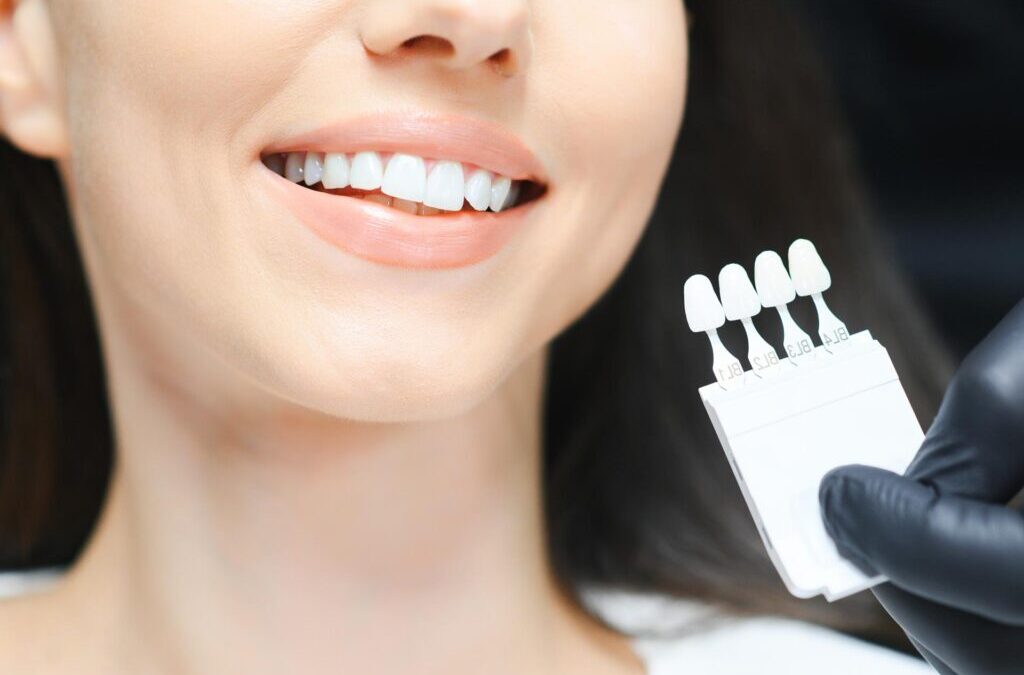
by Dclinicdubai | Sep 24, 2025 | Health
Achieving a beautiful smile goes beyond simply placing veneers—it requires customization that considers your unique facial features, smile dynamics, and personal style. For individuals considering Composite Veneers in Dubai, one of the greatest benefits is the ability to tailor the shape and shade of each veneer for a natural and harmonious appearance. Unlike a one-size-fits-all approach, modern veneer customization ensures that the end result enhances—not overwhelms—your natural beauty.
Importance of Personalization in Composite Veneers:
Customizing veneers ensures they look seamless, symmetrical, and aligned with your overall facial structure rather than appearing artificial or out of place.
-
Customized veneers enhance the harmony between your teeth, lips, and face
-
They avoid the overly “perfect” or “fake” appearance of one-size-fits-all veneers
-
Personalization increases patient satisfaction and confidence
-
Tailored results match the tone of your smile to your personality and lifestyle
-
Customized design supports better long-term results and fewer adjustments
Assessing Facial Features for Smile Design:
To ensure veneers complement your facial features, dentists analyze the size, shape, and proportion of your face during the planning process.
-
Face shape (oval, square, round, heart-shaped) influences veneer contouring
-
Lip volume and movement are considered for smile framing
-
Gum line visibility affects veneer height and exposure
-
Jaw alignment helps determine tooth placement and balance
-
Symmetry is assessed to create a natural and proportional outcome
Choosing the Right Tooth Shape for Your Face:
Tooth shape plays a significant role in how natural and attractive your smile appears. Different shapes can subtly influence your expression and age perception.
-
Oval or rounded teeth soften sharp facial features
-
Square teeth offer a more defined and structured look
-
Tapered teeth may suit smaller or heart-shaped faces
-
Central incisors can be made slightly larger for a youthful look
-
Custom shaping helps balance dominant or asymmetrical facial features
Selecting the Ideal Shade for a Natural Look:
Shade selection is not just about choosing the whitest option—it’s about finding a hue that enhances your skin tone, eye color, and overall facial harmony.
-
Lighter shades suit fairer skin, while warmer tones suit deeper complexions
-
Natural enamel typically contains gradients and translucency—veneers should mimic this
-
Too white can look artificial; slight off-white shades look more realistic
-
Shade matching includes translucency at the edge and saturation in the middle
-
Custom shade guides and digital imaging tools aid in accurate selection
How Digital Smile Design Aids in Customization:
Digital Smile Design (DSD) is a revolutionary tool that uses technology to create a virtual preview of your customized composite veneers.
-
High-resolution photography and video capture natural facial movement
-
Software simulates different shapes and shades for preview
-
Patients can co-design their smile with their dentist
-
Real-time adjustments allow for greater precision and personalization
-
Ensures your veneers match your expressions and face shape dynamically
Benefits of Composite Veneers for Customization:
Composite veneers are uniquely suited for on-the-spot adjustments, offering flexibility and control during the procedure.
-
Composite resin is sculpted directly on the teeth in real-time
-
Dentists can reshape or modify veneers as needed during the appointment
-
Easier to adjust shade and contour compared to porcelain
-
One-visit transformations are possible, with visual feedback from the patient
-
Cost-effective and accessible without sacrificing aesthetics
The Role of a Skilled Cosmetic Dentist:
Your dentist’s skill and artistic eye play a vital role in ensuring your veneers are well-matched to your facial aesthetics and smile goals.
-
Experienced cosmetic dentists understand facial symmetry and proportions
-
They use artistic techniques to layer and shape the composite resin
-
Knowledge of smile design principles leads to more natural-looking results
-
Dentists in Dubai often work with advanced technology for precision
-
Effective communication between patient and dentist ensures mutual vision
Why Choose Composite Veneers in Dubai:
Dubai continues to lead the way in advanced, customized cosmetic dentistry services, offering exceptional quality and care.
-
Clinics in Dubai offer cutting-edge smile design tools and digital imaging
-
Cosmetic dentists are internationally trained and highly experienced
-
Multilingual staff and patient-centric services enhance the experience
-
Access to premium composite materials and same-day treatments
-
Global reputation for excellence in aesthetic dentistry
Final Thoughts:
Customizing composite veneers is about more than just improving your smile—it’s about aligning it with your identity, facial features, and lifestyle. By carefully selecting the ideal shape and shade, and working with a skilled cosmetic dentist, patients can achieve results that look and feel entirely natural. Whether you’re seeking a subtle refresh or a full smile makeover, Composite Veneers in Dubai offer a personalized, high-quality approach backed by the latest in dental technology and artistry. With thoughtful customization, your veneers will not only transform your smile—they’ll enhance your entire appearance.





